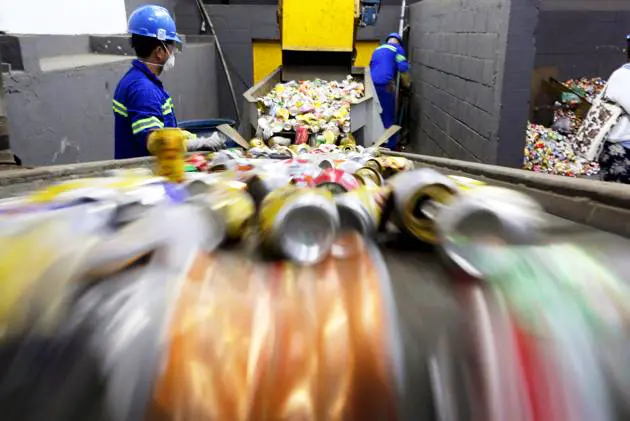Global – Following the implementation of India’s demonetisation measure, ‘the silence was palpable in the secondary non-ferrous market during November and December’. Transactions were ‘at an all-time low’ as a significant proportion of market operators have traditionally been cash-driven. On the upside, businesses are now said to be ‘adapting to the new conditions’ and ‘should return to full force sooner rather than later’.
In China, meanwhile, industry is having to adapt to ever-stricter rules which are partly behind the announcement from the country’s biggest zinc smelter that it is to cut production.
In late 2016, China’s environmental authorities reinforced regulations in the south of the country where most of the processing facilities are located, resulting in a mix of temporary and permanent closures.
In last year’s January-November period, China’s aluminium scrap imports were 10% lower than in the first 11 months of the previous year whereas the November total in isolation was 28% higher than for the penultimate month of 2015.
Across in Mexico, tax laws are still leaving many scrap yard owners with ‘some kind of exposure that, most frequently, will not be reflected in the slim margin our trade dictates’ while, on the plus side, VAT distortion in scrap prices is expected to diminish further this year.
Domestic demand for scrap aluminum is said to be slowly improving in Mexico but remains insufficient ‘to keep some scrap grades or scrap from some regions from being exported’. Long payment terms and the weakness of the Mexican peso against the US dollar ‘are major concerns for any yard undertaking domestic sales’, it is added.
North into the USA, aluminium demand has been healthy and the Midwest premium has advanced from its September low of US$ 0.055-0.06 per lb to US$ 0.0875-0.09. Secondary aluminium scrap prices have improved while brass consumers ‘are booking metal two to three months out’.
In the first 11 months of 2016, the weaker Japanese yen spurred a 14% year-on-year increase in the country’s exports of aluminium scrap to 157 200 tons, representing growth of 14% over the same period in 2015.
Shipments of UBC scrap to South Korea surged 56% to 54 500 tons. Aluminium scrap supply is described as ‘very tight’ in Japan and the market is expected to ‘remain bullish’ at least through the winter period.
In Europe, feedback from the Benelux countries indicates that rising prices towards the end of last year led to a gradual saturation of the majority of non-ferrous metal markets. ‘It would be true to state that consumers of copper, aluminium and zinc are all well-provisioned with raw materials,’ it is stated.
In France, scrap dealers are completing relatively few transactions at present because many of their customers have adequate to high stocks. ‘Most European copper factories are not purchasing,’ it is noted. ‘Some are even starting to book material for the second half of 2017.’
From Germany, meanwhile, it is reported that the flood of copper scrap into the market following Donald Trump’s election win in the USA has now ebbed to the point of tightness once again.
This article is based on the latest BIR World Mirror released for the benefit of its members.
Don't hesitate to contact us to share your input and ideas. Subscribe to the magazine or (free) newsletter.



